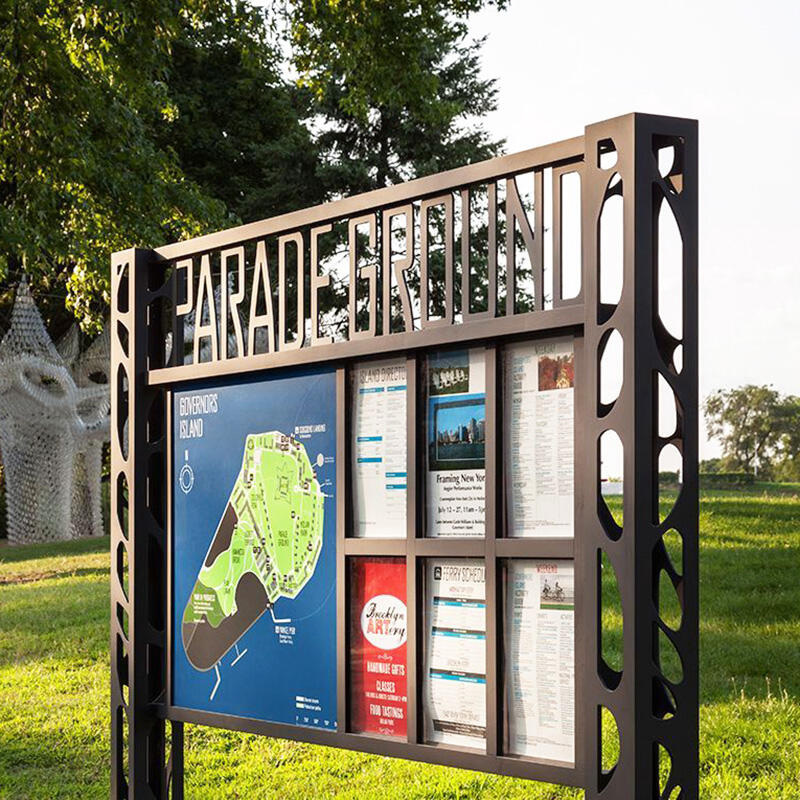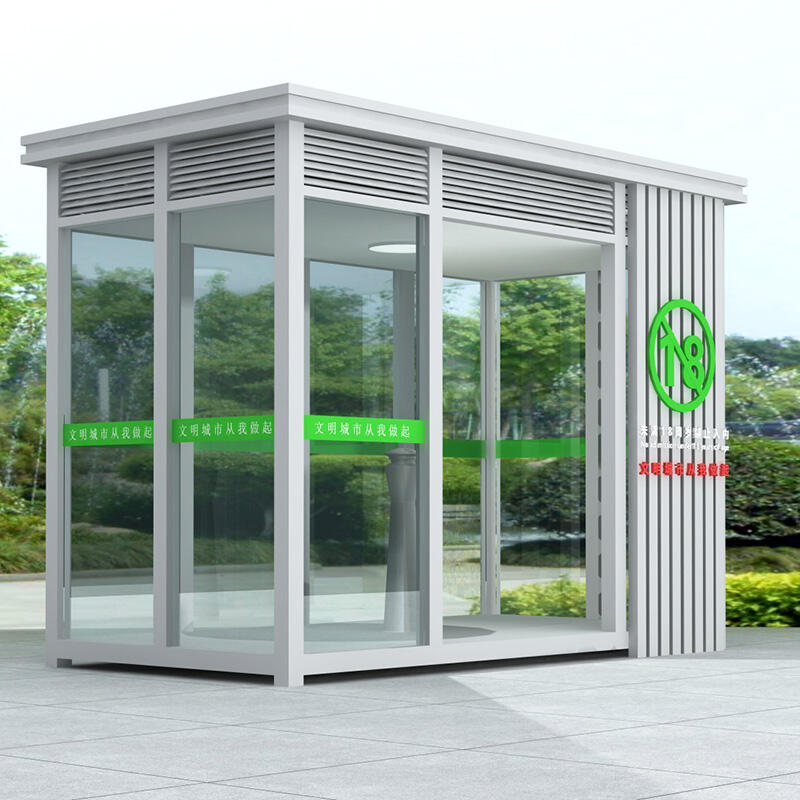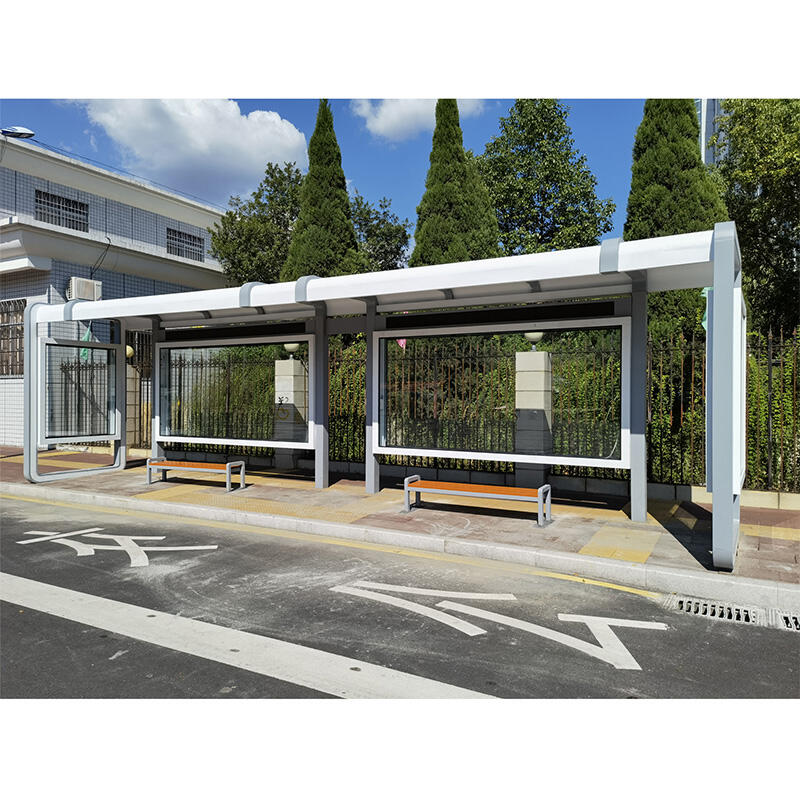A hirdetőtáblák lényeges vizuális kommunikációs eszközök, amelyek márkákat, termékeket vagy szolgáltatásokat promóznak egy célcsoportnak. Ezek a táblák egy csendes értékesítőként működnek, figyelmet kapva és befolyásolva a fogyasztói döntéseket. Az outside reklám különösen fontos szerepet játszik a fogyasztói tudatról az információ terjedésében. Dinamikus médium, amely lehetővé teszi a közvetlen interakciót egy vastag közönséggel, és jelentősen segíti a márkanevetség és -ismertet növelését. Ahogy a vállalkozások egyre inkább kihasználják ezeknek a tábláknak a stratégiai elhelyezését, ez a formájú reklám jelentősége folyamatosan nő.
A különböző típusú reklámtablinek felfedezése megmutatja a marketing stratégiák és azok költségvetési lehetőségeinek sokféleségét. A gyakori típusok közé tartoznak a táblázati reklámok, utaszámjelzők, neszignumok, zászlók és digitális kijelzők. A táblázati reklámok és utaszámjelzők tradicióssal bírnak, de hatékonyak is, gyakran stratégiai helyeken helyezkednek el autópályákon és forgalomban sűrűn járt utcákon maximális láthatóság érdekében. A neszignumok egyedi, figyelmet felhívó fényt bocsátanak, ami ideális éjjeli reklámozásra. A zászlók tervezési és elhelyezési szempontból rugalmasak, míg a digitális kijelzők dinamikus tartalmat tesznek lehetővé, amely valós időben alkalmazható eseményekhez. Az empirikus adatok szerint ezek a külső reklámmediumok jelentős részvételi potenciált kínálnak, nagymértékű láthatóságot és helyi célozást biztosítva.
A reklámtabla telepítésének tervezése
Egyértelmű célok megszabása a tábla számára
Egyértelmű célok kijelölése a reklámjelzőid számára kulcsfontosságú a sikertelenségükhez. Ezek a célok lehetnek, például a lábforgalom növelése, a márkaismeret javítása vagy az értékesítés megnövelése, és mérhetőeknek kell lenniük. A jelzők hatékonyságának nyomon követésére értékesítési adatok, ügyfélvisszajelzések és webhely forgalom elemzése használható. Ezeknek a céloknak az egész marketing stratégiaival való igazítása növeli a koherenciát, és jelentős jutalmakhoz vezethet. A tanulmányok gyakran emelnének ki, hogy hogyan élvezhetik a sikeresen integrált reklámcélokkal és jelzőkkel rendelkező vállalkozások növekvő márkailletlenséget és ügyfélszertartást.
A legjobb láthatóság érdekében a megfelelő hely választása
A reklám táblák megfelelő helyszínének kiválasztása alapvető a láthatóság és hatékonyság maximalizálásához. Tényezők, mint például a forgalom térfogata, a közelben lévő versenytársak, és a célcsoportod szokásai elemzendők. A statisztikák szerint a nagy láthatóságú helyek, például a sűrű forgalomban lévő útkereszteződések vagy a vásárolóterületek központjai jelentősen növelik az interakciót. Emellett figyelembe kell venni a láthatóságot biztosító technikákat, beleértve a tábla magasságát, az utcai távolságát és a legjobb látópontokat, hogy a táblázat hatékonyan elérje célközönségét. Ezek a stratégiai elhelyezési módszerek kulcsfontosságúak annak biztosításához, hogy a távirányító vagy a tábla hatékonyan teljesítse célját.
A helyi szabályozások és engedélyek megértése
A reklámjelzők szabályozási környezetének átnavigálása egy teljes körű ismeret igényel a helyi zónázási törvényekről, a jogosítványi követelményekről és a méretkorlátozásokról. A helyi kormányzati folyamatok hatékony kezelése alapvető a nem megfeleléses jogi csapások elkerülése érdekében. Valós példák olyan vállalkozásokról, amelyek ilyen szabályozási figyelmetlenségek miatt találkoztak kihívásokkal, megmutatják a komplex kutatás és előkészület fontosságát. A helyi szabályok ismerete a reklámjelzőkről és a szükséges engedélyek szerzése lehetővé teszi a vállalkozások számára a megfelelőség biztosítását, valamint a marketing stratégiáik zavarainak elkerülését. A megfelelés nemcsak büntetéseket kerget, hanem növeli a professionális hitelességet és a nyilvánossági képet.
Hatékony reklámjelzők tervezése
A sikeres jelzőterv kulcs elemei
Hatásos tábláz készítése a tervezési elemek, mint a szín, a betűtípus, a kép és a elrendezés értelmezésével kezdődik. A színelmélet fontos szerepet játszik, mivel különböző árnyalatok különböző érzelemeket és reakciókat kelthetnek a fogyasztók részéről. Például piros esetleg sürgőséget jelez, míg a kék gyakran megbízást sugall. A komplementer színek a branding alapján kell kiválasztaniuk, hogy megmaradjon a konzisztencia és a vonzereje. A Journal of Business Research című tanulmány kiemeli, hogy a szín akár 80%-ig növelheti a márkanezethetőséget. Jól tervezett elrendezés biztosítja, hogy az üzenet világos és figyelmet felhívó legyen. Sikeres kampányok, mint a Nike táblái, erős és világos terveken alapulnak, hogy hatékonyan közöljék az üzenetüket vizuális mesélés útján, amely bemutatja a hatékony reklám táblák jelentőségét.
A márkaazonosság beépítése a táblázba
A vállalati azonosító elemek, például a logók és sloganok integrálása a táblaterv tervezésébe alapvető a márkanevezetesség fokozásához. A konzisztencia a márkaszerződési médiumokon keresztül nemcsak megerősíti az ismertséget, hanem épít fel márkahűséget is. A Coca-Cola vagy hasonló nagyméretű márkák folyamatosan alkalmazzák az ikonikus logójukat és színeit az összes reklám tábla esetében, így biztosítva a márkakonzisztenciát. Ez a koherens megközelítés segít megerősíteni az üzenetüket, ami memóriabeli és azonnali felismerhetőségű lesz. A táblatípusok különböző formái közötti egyenletes tartalom fenntartása, a táblázatoktól a kisebb táblaállványokig, lényeges egy egységes márkakép fenntartásához.
A távolról való olvashatóság és láthatóság biztosítása
A olvashatóság kulcs azzahhoz, hogy a táblád könnyen olvasható legyen a nézők számára, akár távolról is. Fontos tényezők egy megfelelő betűméret kiválasztása, a magas kontraszt fenntartása a szöveg és a háttér között, valamint a zavarok elkerülése rövid szöveggel. A tábla tervezési szakértők szerint a szöveg legalább tíz látra olvasható kell legyen minden egyetlen betűmagasság inchére, hogy hatékonyan biztosítsuk a táblázati olvashatóságot. A láthatóságra vonatkozó funkciók, például a megfelelő fényezés is fontosak, különösen az éjszaka láthatósága miatt. Az adatok azt mutatják, hogy jól fényezett táblák nagyobb valószínűséggel vonzalnak fel a fogyasztók figyelmét a napszállás után, amely javított olvashatóság következtében növeli az interakciót. Így mind az olvashatóságra, mind a láthatóságra összpontosítani kell sikeres reklámtáblákat tervezni, amelyek hatékonyan hatnak a célértékeikre.
A telepítési folyamat: Lépésről lépésre útmutató
Előtelepítési helyi felmérés
A telepítés előtti helyszíni felmérés alapvető a táblázattelepítés alkalmasságának értékeléséhez. Ez a folyamat fizikai feltételek ellenőrzését tartalmazza, például a térkiív, a rögzítési felület integritása és a környezeti tényezők hatására való kitettség. A részletes helyszín-felmérés segít azonosítani a potenciális kihívásokat és megoldásokat alkalmazni ennek megfelelően. Az ipari jelentések szerint gyakori problémák, mint a szerkezetes gyengeségek vagy az elégtelen tér elhatározóan befolyásolhatják a telepítés sikeres végrehajtását. Tehát, egy szakszerű helyszín-értékelés döntő ahhoz, hogy kerüljön el a költséges hibákat és biztosítson zökkenőmentes telepítést.
Eszközök és berendezések előkészítése
A táblázat telepítése előtt a szükséges eszközök és berendezések előkészítése fontos. A lényeges elemek közé tartoznak a tábla rögzítéséhez használt fúratgép, a magasabb területek eléréséhez a támasztó, valamint a védőfelszerelés, például a fejedezek és az ingerek a telepítők védelme érdekében. A megfelelő berendezés felkészítése nemcsak növeli a hatékonyságot, hanem biztosítja a minőséges munkavégzést is. Itt egy rövid lista hatékony előkészítés érdekében:
- Rendezd el az összes eszközt és berendezést előre.
- Végezz egy biztonsági beszélgetést a telepítőcsapatkal.
- Ellenőrizd az eszközöket, hogy működésre legyenek készülve.
Ezek a lépések biztosítják a legmagasabb biztonságot és pontosságot a telepítés során.
A tábla rögzítése: falra illesztett vs. talajra illesztett
A falra raktatott és a talajon támaszkodó táblák biztosításában fellév különbségek értelmezése alapvető sikeres telepítés szempontjából. A falra raktatott táblák esetén figyelembe kell venni a fal terheléselosztási képességét, valamint annak biztosítását, hogy a tábla látható legyen a célközönség számára. A talajon támaszkodó táblák esetében az alap stabilizálása és a láthatóság figyelembevétele mind gyalogosoknak, mind járműveknek fontos. Tanulmányok szerint jól végrehajtva mindegyik technika jelentősen növelheti a közönség elérését. A megfigyelési adatok azt mutatják, hogy stratégiai helyen lévő táblák, függetlenül attól, hogy falra vagy talajon raktatottak, javíthatják a márkaláthatóságot és a részvételt.
Villamos komponensek kezelése fénylő táblák esetén
Az illuminiált táblák telepítése során az elektrikai komponensek kezelése szigorú biztonsági protokollokat igényel. Fontos, hogy képes elektromos munkások bizzatsuk be a vezetékekkel és az LED modulokkal kapcsolatos feladatokat. A rendszeres eljárás magas minőségű elektrikai anyagok beszerzésével kezdődik, és az ipari szabványok betartásával a táblák telepítése során. A folyamat olyan lépéseket tartalmaz, mint a megfelelő kapcsolatok biztosítása és a funkcionalitás teljes körű tesztelése a biztonság és megbízhatóság garantálása érdekében. A megfelelő biztonsági intézkedések követése csökkenti a kockázatokat és biztosítja az illuminiált reklám táblák hosszú távú hatékonyságát és élettartamát.
Reklám táblák karbantartása és hosszú távú hasznossága
Rendszeres tisztítás és ellenőrzés
A hirdetőtáblák karbantartása rendszeres tisztítást és ellenőrzést igényel, hogy a legjobb láthatóságot és szerkezeti integritást biztosítsa. A konzisztens tisztítási ütemterv környezeti tényezőket, például a szennyezést és az időjárást kell figyelembe vennie. Például egy magas szintű szennyezési területen lévő tábla gyakrabban kell tisztítania, mint egy Vidéki területen található táblát. Egy a Környezeti Tervezés Folyóiratban közölt tanulmány szerint a rendszeres karbantartás eltarthatja a tábla élettartamát maximum 25%-kal, és jelentősen növeli a láthatóságot. Ezek a előnyök alapján ésszerű kijelölni egy adott költségvetést a táblák folyamatos karbantartására, hogy megelőzzük a korai kihasznosodást, és biztosítsuk a hirdetés folyamatos hatékonyságát.
Időjárások okozta károk és auszerek kezelése
A jelzékek esetében a weather damage gyakori probléma, a szél, a víz és a napfény hatása miatt előfordulhat az auszás. A különböző típusú károk különböző javítási stratégiák igényelnek. Például, a víz által okozott károsodás esetén vízrezes anyagok használata lehet szükséges, míg a napfény kártétele UV-védelmi rétegek alkalmazását igényli. Az International Journal of Outdoor Advertising című tanulmány hangsúlyozza, hogy a összetett anyagokból készült és egyedi tervezésű felületek jobban bírnak a mérsékletlen környezeti feltételekkel. Ez a kutatás megemeli a tartós anyagok és olyan tervek fontosságát, amelyek adott éghajlati feltételekhez alkalmazkodva nem csak túlélnek, hanem továbbra is hatékonyan működnek reklám eszközöként.
Mikor érdemes javítani vagy váltani a jelzést?
Azzal kapcsolatos döntés meghatározására, hogy egy táblát javítunk vagy cserélünk ki, a kár extenziójának elemzése és egy költség-hatékonyság elemzés végrehozatala szükséges. Túlságosan sérült táblák gyakran magasabb javítási költségekkel járnak, mint a helyettesítés. Továbbá, a javítástól az új tervezet felé történő áttérés hosszú távú előnyöket biztosíthat. Egy friss, hatékony tervezet jelentős mértékben növelheti a márkavisibilitást és az ügyfélok érdeklődését. A vállalkozások tanulmányozhatnak esettanulmányokat, ahol cégek sikeresen áttértek a javítástól a cserére, amely javultott reklám eredményekhez és visszatérésre a befektetésből vezetett. Ez a döntési folyamat mindig a rövid távú költséget kell mérlegelni a hosszú távú estétikai és funkcionális nyereségekkel szemben, biztosítva, hogy a tábla továbbra is értékes közös létesítmény maradjon, amely a márkát promózza.









